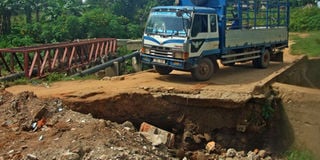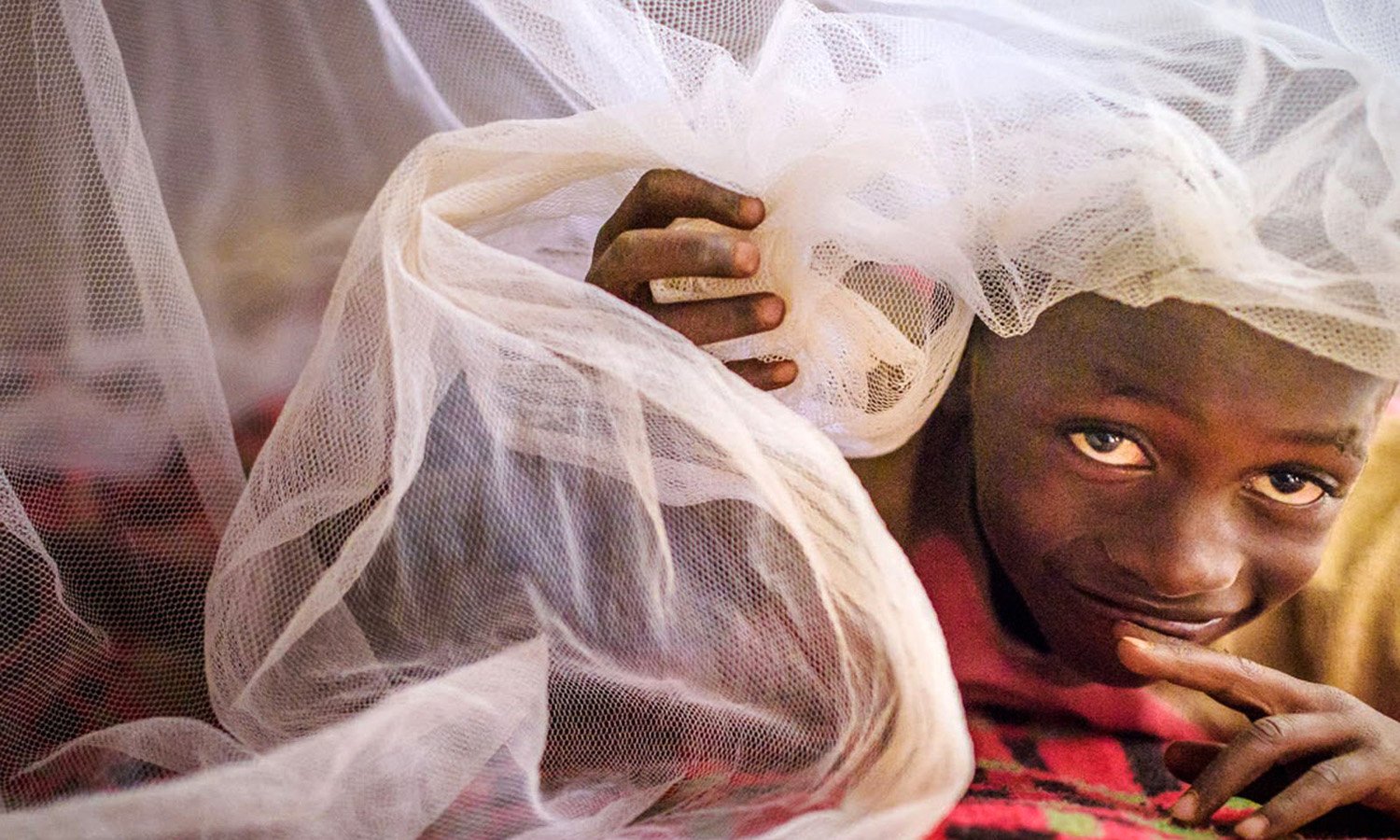Collapsed bridge cuts off Arua villages for three years

A truck driver negotiates a broken part of Osu Bridge in Arua District recently. PHOTO BY FELIX WAROM OKELLO
What you need to know:
- Osu Bridge was constructed in early 1990’s with funding from Community Action Programme (CAP).
- It has never received a face-lift despite connecting key areas of Terego, Rhino Camp and Maracha.
- The bridge links to Ociba primary and secondary schools, residential areas, Ociba Catholic and Anglican churches, Ociba Market, Ombaci, Manibe and Dadamu sub-counties.
Angufewa and Ociba villages, which have a population of 8,000, have been cut off from the rest of Arua District for the last three years following the collapse of Osu Bridge.
The collapse of the bridge has greatly hindered trade and delivery of social services to the two villages.
Locals are faced with difficulties of transporting their agricultural produce to the market.
After waiting in vain for the authorities to repair the bridge, the locals improvised and repaired the broken parts using stones.
However, crossing the makeshift bridge is a dangerous affair that most drivers of lorries that carry goods to Ociba market have shunned.
During the rainy season, the makeshift bridge is slippery. Several people have slid and fallen into the river while attempting to cross the bridge.
Speaking to Daily Monitor at the weekend, Mr William Econi, one of the locals who frequently uses the bridge, said: “Two people nearly died here when they fell through the deep hole of the collapsed bridge. We have been asking our local leaders to work on it but in vain. Our leaders are only good at talking when it is time for elections, but after they are voted, they go to sleep yet people continue suffering.”
He said James Matua, a resident of Angufewa village in Dadamu Sub-county, who was crossing the bridge slid off the broken part and fell into the river, sustaining injuries on his chest.
The collapse of the bridge has also negatively affected residents involved in sand mining near the river.
A miner, Ms Betty Onziru, said sale of sand has reduced drastically because vehicles cannot cross the river.
“Some of us are taking care of orphans with money from sale of sand and this has become difficult because of the broken bridge. Even in the market, you find there are few goods that are mainly carried by people on their heads. With the high population, there is demand but goods cannot reach the market,” Ms Onziru
The district engineer, Mr Anson Draku, said they have taken long to reconstruct the bridge because of a shortage of funds.
He said reconstructing the bridge requires about Shs350 million. “We have for planned it in the next financial year because we want to construct it afresh. At the moment, there is nothing we can do because we don’t have the money. We ask the people not to remove the warning signs because it will help reduce accidents,” he said.
“Our patience is running out and we shall soon demonstrate over this bridge if the government does not repair it. Each time it floods, we are forced to undress and cross the river in our underwear to prevent our clothes from getting wet. We pay a lot of taxes to this government but it is spent on non-issues yet we are suffering,” Mr Suzan Obideru, another resident of the area, said.
Bridges in the district
Osu Bridge was constructed in the early 1990s with funding from Community Action Programme (CAP).
It has never received a face-lift despite connecting key areas of Terego, Rhino Camp and Maracha.
The bridge links to Ociba primary and secondary schools, residential areas, Ociba Catholic and Anglican churches, Ociba Market, Ombaci, Manibe and Dadamu sub-counties.
The district works and engineering department has for the past five years been receiving Shs1 billion for district and community roads maintenance and rehabilitation.
The district has 32 bridges, nine of which are in a sorry state.



